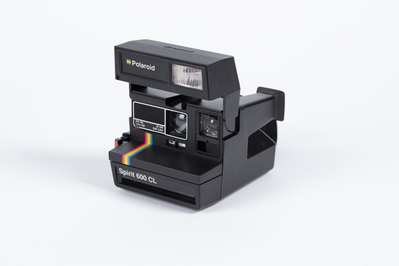Camera [Stereo Camera]
Maker and role
Krupp Ernemann, Manufacturer
See full details
Object detail
Accession number
1972.3.2
Maker
Production period
Description
Ernemann stereo camera with Ernemann Detectiv Aplanat lenses. Folding camera with light tan bellows and twin stereoscopic lenses. Front door containing lenses is hinged, back door with screen is hinged with clips at top. Small hinged alignment window at top. Box is made of wood and covered with leather.
Brief History
Stereoscopic cameras such as this Ernemann camera, likely dating to the 1900s, replicate human vision by exposing two images of the subject taken from slightly different viewpoints. When combined in a stereoscopic viewer, the images present the illusion of depth.
Stereoscopic photography became popular following the “Great Exhibition of the Works of Industry of all Nations” in London in 1851. This, the first international exhibition of manufactured and natural products, promoted, among other things, new technologies, such as photography. Although camera equipment was expensive and photography as a hobby was only available to the well off, accessibly priced stereoscopic viewers and mass-produced stereoscopic views brought photography to the masses. Popular subjects included landscapes and architecture, also exposing many who could not afford it to the delights of travels.
Stereoscopic photography became popular following the “Great Exhibition of the Works of Industry of all Nations” in London in 1851. This, the first international exhibition of manufactured and natural products, promoted, among other things, new technologies, such as photography. Although camera equipment was expensive and photography as a hobby was only available to the well off, accessibly priced stereoscopic viewers and mass-produced stereoscopic views brought photography to the masses. Popular subjects included landscapes and architecture, also exposing many who could not afford it to the delights of travels.
Marks
Ernemann-Dresden DRP Ang. Inscribed
Media/Materials
Credit Line
Krupp Ernemann. Camera [Stereo Camera], 1972.3.2. The Museum of Transport and Technology (MOTAT).
Related exhibitions



Public comments
Be the first to comment on this object record.